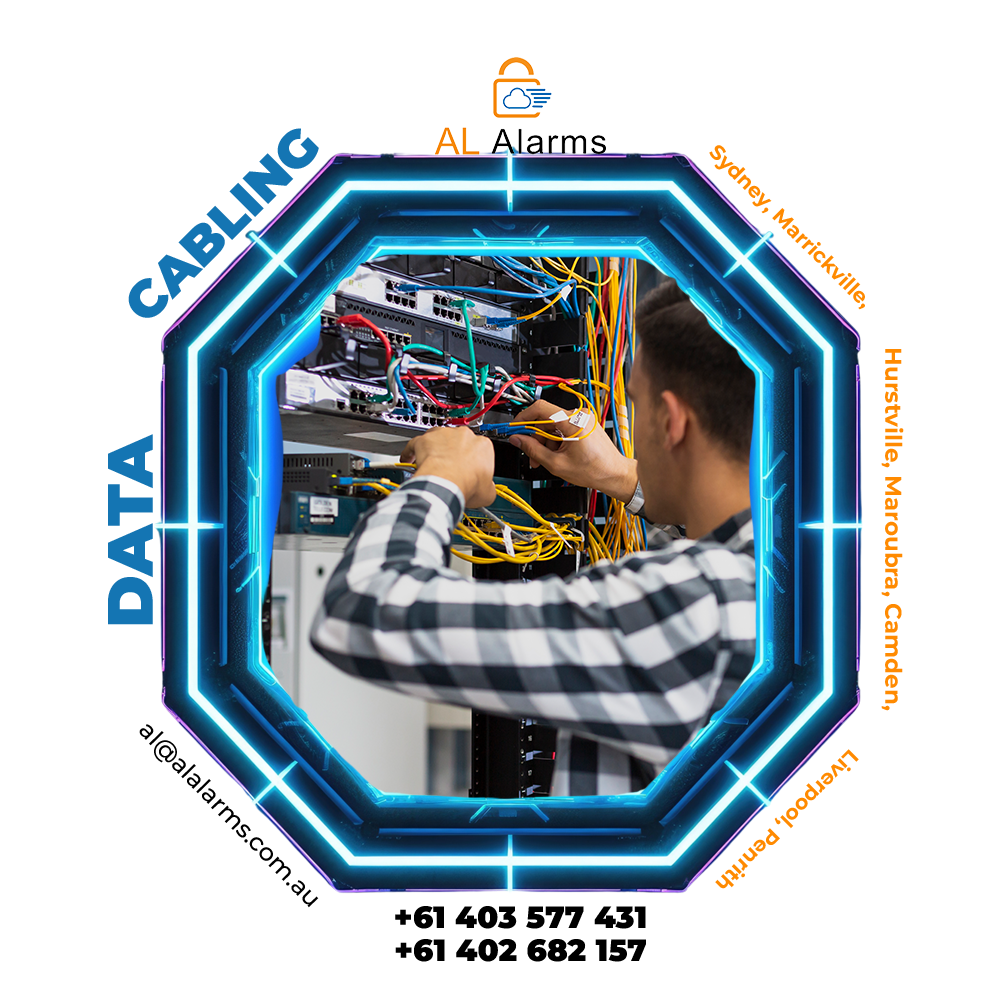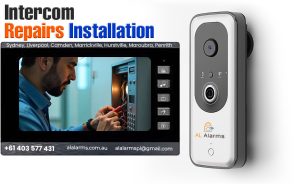When it comes to data cables, we understand the intricate network of data transfer. Data cables are essential for transferring data between various devices, such as computers and printers, computers and cameras, and connecting peripheral devices like laptops, external monitors, and mobile phones.
Whether you aspire to have an automated home or run a well-established business, data cables are crucial for safety and security, connecting cameras throughout the premises.
In this blog, we will discuss the complex network of data cabling in Sydney, Marrickville, Hurstville, Maroubra, Camden, Liverpool, and Penrith, their types, and their importance in connecting cameras as part of a vast surveillance network.
What is Data Cabling ?
Data cabling is a method of connecting multiple devices such as PCs, printers, CCTV cameras, and servers within an IT network. It involves the use of various types of cables to establish a network that allows for the efficient transfer of data. This network is the backbone of modern communication systems. It enables seamless connectivity and data exchange.
The Use of Data Cabling in the Establishment of Network for Data Transfer :-
Data cabling plays a pivotal role in the establishment of networks for data transfer. In both residential and commercial settings, data cables are used to create a structured cabling system that supports various communication systems, including internet, telephone, and video conferencing. We use data cables in several situations such as;
(i) To establish a connection between a computer’s motherboard and its hard drive, we use the data cables.
(ii) To establish a connection between a computer to a vast network of cameras, between a computer and a printer, and between a computer and a scanner.
(iii) We also use the cables to connect peripheral devices including mobile phones, laptops, and external monitors.
[1] Home Automation and Data Cabling :
In an automated home, data cables connect various smart devices. They allow them to communicate with each other and be controlled remotely. Using data cables, you can distribute data, voice, and video signals in a home ensuring security, well-being, and comfort. Especially, when you want to install cameras all over the home to ensure perfect surveillance you need to establish a network of structured cabling.
[2] Smart Business and Data Cabling :
For businesses, data cabling is critical for connecting computers, servers, and other devices, ensuring smooth operations and efficient data management. You need to ensure you have robust structured cabling through the business premises. A well-structured data cabling installation works as the glue that binds your entire business’ infrastructure together.
Data cabling In Blacktown, Burwood, Picnic Point, Homebush, Castle Hill, Mona Vale, and Bankstown, is essential for ensuring reliable and high-speed data transfer.
The Types of Data Cables for Various Utilisation :-
There are several types of data cables, each designed for specific applications and environments.
Here are some of the most common types :
1. Ethernet Cables (Cat5e, Cat6, Cat6a, Cat7, Cat8) :
These cables are widely used for networking purposes, connecting computers, routers, and switches. They support high-speed data transfer and are suitable for both residential and commercial networks.
2. Fibre Optic Cables :
These cables use light to transmit data, offering higher speeds and greater bandwidth compared to traditional copper cables. They are ideal for long-distance data transfer and are commonly used in large-scale networks.
3. Twisted Pair Cables :
In the case of an IP-based CCTV system, twisted pair cables are used to connect the camera to a network switch or recorder. We can use these cables to transmit both data and power, simplifying installation and reducing cable clutter.
4. Coaxial Cables :
Often used for cable television and internet connections, coaxial cables are known for their durability and ability to carry high-frequency signals.
5. USB Cables :
These cables are used to connect peripheral devices like printers, external hard drives, and mobile phones to computers. They come in various types, including USB-A, USB-B, USB-C, and Micro-USB.
6. HDMI Cables :
Used for transmitting high-definition video and audio signals, HDMI cables are commonly used to connect monitors, TVs, and projectors to computers and other devices.
The Importance of Data Cabling in Establishing Networks with Various Cameras :-
Data cabling is crucial for establishing a network with various cameras and forming a comprehensive surveillance system.
Data cabling in Sutherland, St Marys, Campsie, Parramatta, Quakers Hill, Strathfield, and Pennant Hills, ensures a robust network connecting cameras for surveillance.
Surveillance systems are essential for ensuring safety and security in both residential and commercial areas.
(I) Robust Surveillance System :
By connecting CCTV cameras through data cables, you can create a robust surveillance network that allows for real-time monitoring and recording.
(II) Alarm Systems :
The data cabling network can be integrated with other security systems, such as alarms and access control, to provide a comprehensive security solution.
Camera and Data Cabling | How the System Works :-
Data cabling ensures that the video feed from each camera is transmitted reliably and efficiently to a central monitoring system. This allows for continuous surveillance and quick response to any security incidents. Additionally, data cables support high-definition video transmission. They ensure clear and detailed footage that can be crucial for identifying and addressing security threats.
5 Essential Benefits of Data Cabling :-
There are several benefits when it comes to installing structured cabling whether it is for home or business. Here are some of the benefits:
(i) It improves Speed and Performance
(ii) It simplifies troubleshooting and maintenance tasks
(iii) The Data cabling system is cost-effective
(iv) It proves stability and reliability.
(v) It enhances safety and security, among many other things.
In conclusion, data cabling is an essential component of modern communication and security systems. It enables the efficient transfer of data between various devices, supports high-speed internet and communication networks, and plays a critical role in establishing comprehensive surveillance systems.
If you are looking for expert suggestions about data cabling you can get in touch with Al Alarms. We provide a seamless data cabling system integrating your surveillance system.
Whether it is camera installation or alarms, connecting them with the right data cables is our speciality.
Data cabling in Kellyville, West Mead, Lidcombe, Picton, Kings Wood, Kings Grove, and Botany, is vital for ensuring reliable connectivity and security.
Whether you are setting up an automated home or running a business, investing in a robust data cabling infrastructure is crucial for achieving seamless connectivity and effective data management. By understanding the different types of data cables and their applications, you can make informed decisions to meet your specific networking needs.




